Keeping the U-Joint greased and ensuring the boot is in great shape is part of regular car maintenance.
U-Joint failure will leave your car undrivable. So let’s learn how to grease u-joints and keep your car on the road.
Bad U Joint: What to Look for?
If you hear clinking or clanking as you shift the transmission, you may have worn connecting points between the driveshaft and the U-joint.
A vibration that gets worse as you increase your speed and when slowing down, but not if the car is idling, is more than likely a U-joint problem.
A sound of metal-on-metal banging together (when you hear this sound, go immediately to the mechanic.)
How to Grease U Joints without Fittings?

Tools
1. Grease
Use grease made for automotive use as they will last the longest. A Marine grease or Heavy-Duty Lithium Synthetic grease will work well. Make sure they are OEM (original equipment manufacturer).
2. A Grease Gun
Chose a gun that will let you see how much you’re putting in the joint and put the least pressure on the ball joint seal. A hand-powered grease gun is perfect for this!
3. Grease Zerk Needle Adapter
This adapter looks like a hollow needle end with a grease zerk attached; it attaches to a grease gun (held in place on the tip of the grease gun by the coupler end you screw to loosen and tighten the gun, it locks in place.)
The sharp end has a plastic cover that should be left on until you use the grease gun.
4. Rag
As a mechanic, you should have plenty of these. Your rag will be used to get any dirt or grime off the boot (joint), keep the needle end from clogging, and clean the needle adapter after you grease the joint.
5. Flexible Hose
The flexible hose makes it easier to get into tighter places and keeps the frustration to a minimum. It gives a little more room to do the job.
The Process
Step 1: Examine the Boot
Check u joint for tears and leaks. You will see grease leaking if it is cracked or torn. If it is torn, it will need to be replaced to keep dust and dirt out of the joint and create damage.
Step 2: Cleaning the Boot and Joint
Clean the boot with your rag, make sure to get off debris that can clog the zerk needle adapter.
Next, inspect the zerk you are going to grease. You want shiny metal, no rust or corrosion. If it isn’t clean and shiny metal, replace the zerk before greasing it.
Step 3: Attaching the Zerk to the Grease Gun
Clean the end of the grease gun and place the zerk needle adapter in place.
Be careful not to poke your hand or fingers with the needle’s tip. If the grease gun has a coupler, tighten it to hold the adapter in place.
Make sure the t use a needle that is new and sharp.
Step 4: Inserting the Needle Into the Boot’s Side
Insert your needle into the side of the boot, placing the grease in the bearing where it needs to be.
It may be hard to get the needle into the boot; use steady pressure until it feels like you are in the boot.
Step 5: The Boot Will Swell…Pump Slowly
This is not a quick job; go slow.
Pump the gun slow and steady; watch for the boot to swell once the grease leaks around the boot. Make sure no grease is coming from tears in the boot or you are done.
Use your rag to clean off the excess grease on the boot.
As you remove the needle, you may see some grease come out of the hole on the boot where your needle was.
Clean the extra grease off the boot.
Step 6: Cleaning Off Excess Grease After Removing the Needle
Carefully remove the needle from the grease gun, cleaning the needle before putting the plastic cover on.
After the needle is safely put away, clean any grease off the grease gun coupler.
Step 7: Drive Around the Block
Test drive the car by taking it around the block. Listen for noises during the ride.
Once you get back home, check the boot for leaking grease. If there is none, you have done a great job!
Non-Greaseable Joints or Greaseable?
-
Longevity
Greaseable joints will last longer than non-greaseable joints because you can grease them. If you don’t grease joints, they will not last long and will need replacing.
Non-Greaseable joints do not last as long as a greaseable joint, as they wear down as the grease breaks down.
-
Joint Strength
It’s believed that Non-Greaseable joints are stronger than Greaseable joints, but there are no statistics to prove this!
-
When to Lube
Greaseable: If you want to keep your U-joints in good shape, grease them every 5,000 miles or as close to that as possible.
Non-Greaseable joints do not have to be lubed; if you want to grease them, use the method above and grease them about every 5,000 miles as you would a greaseable joint.
FAQs
1. How often do U-Joints need to be greased?
Ans. Improper greasing can result in expensive damage to the car or an accident. Greaseable joints need to greasing approximately every 5,000 miles. Non-greaseable joints don’t need to be greased, but you can also grease them every 5,000 miles.
2. Should I drive with bad U-Joints?
Ans. NO! The longer you drive on a bad u-joint, the more expensive the repair will be; you are taking the chance of having the driveshaft fall off and severely damage the undercarriage of your car.
Do not put the lives of everyone in your car at risk of being injured in an accident. It is safer and much cheaper to immediately get the bad u-joint taken care of!


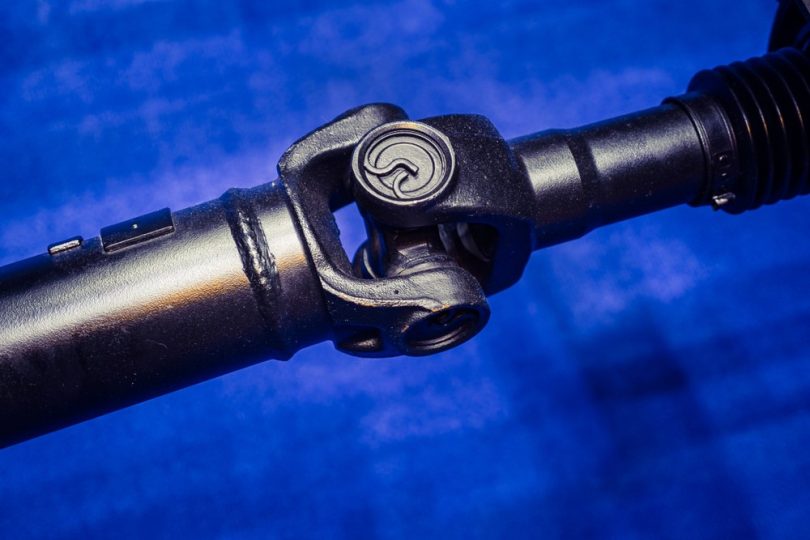
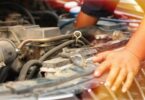
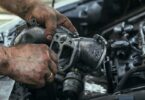
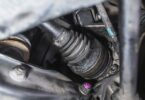
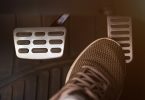
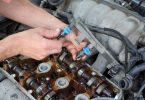
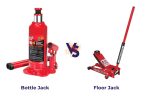

Leave a Comment